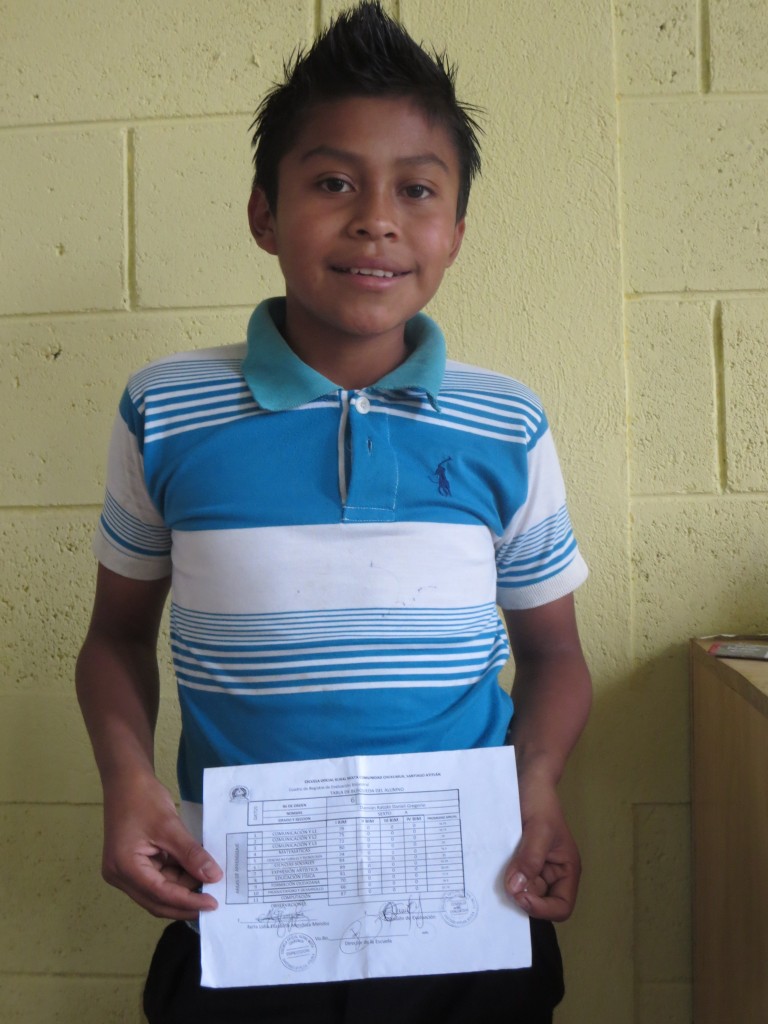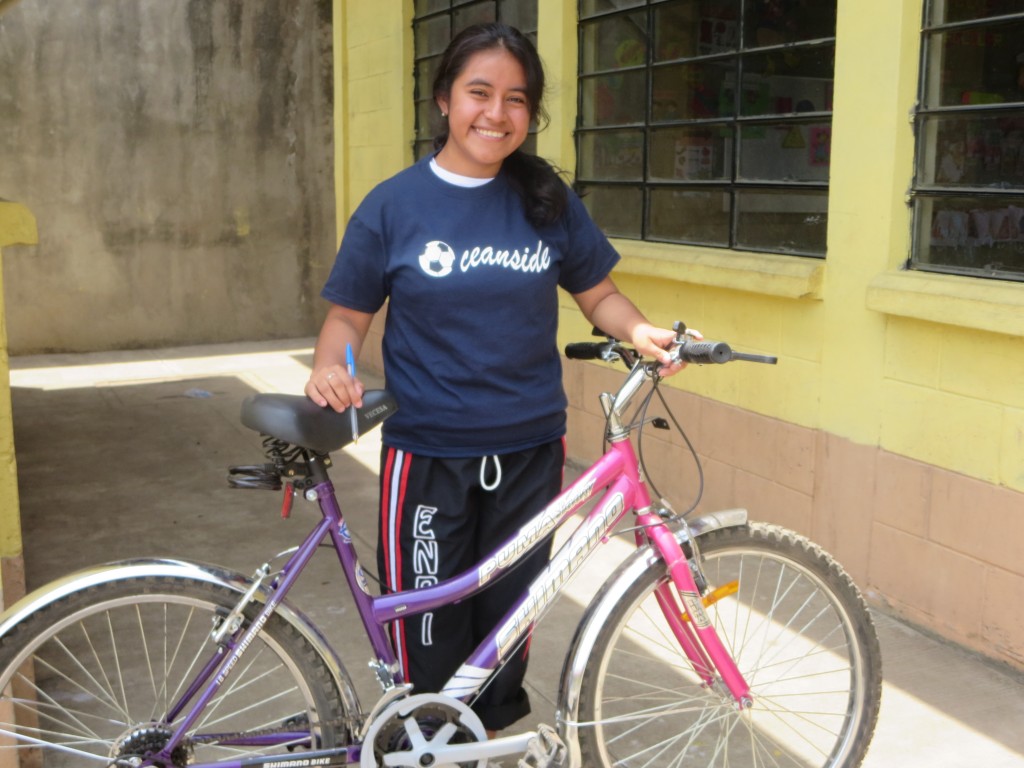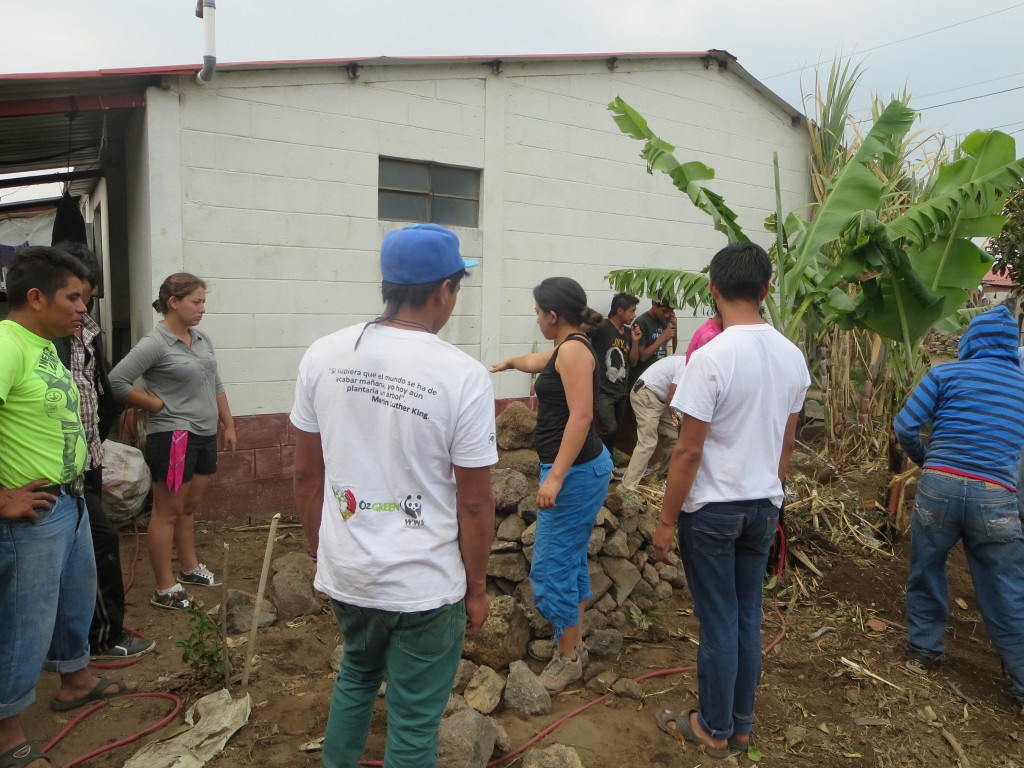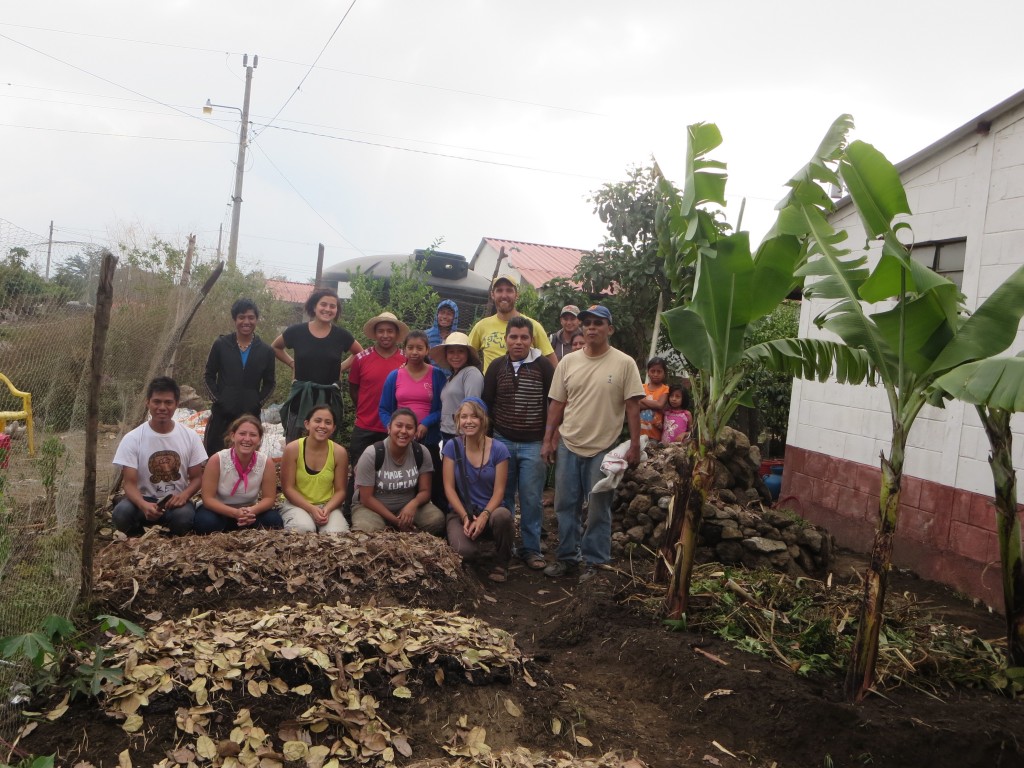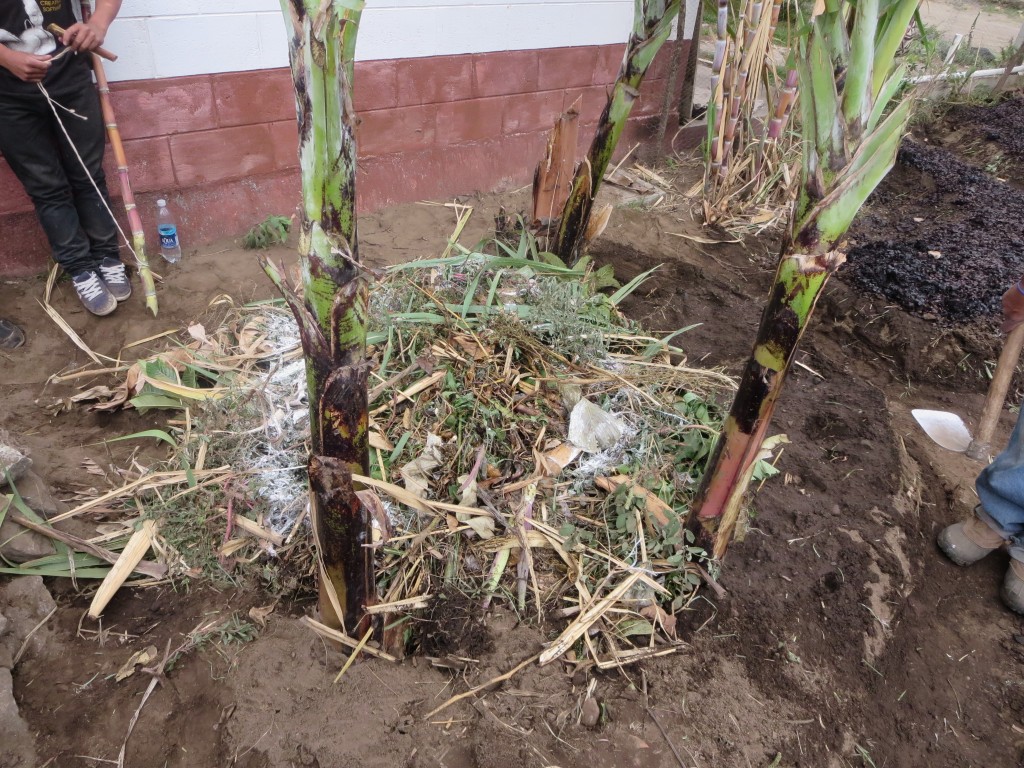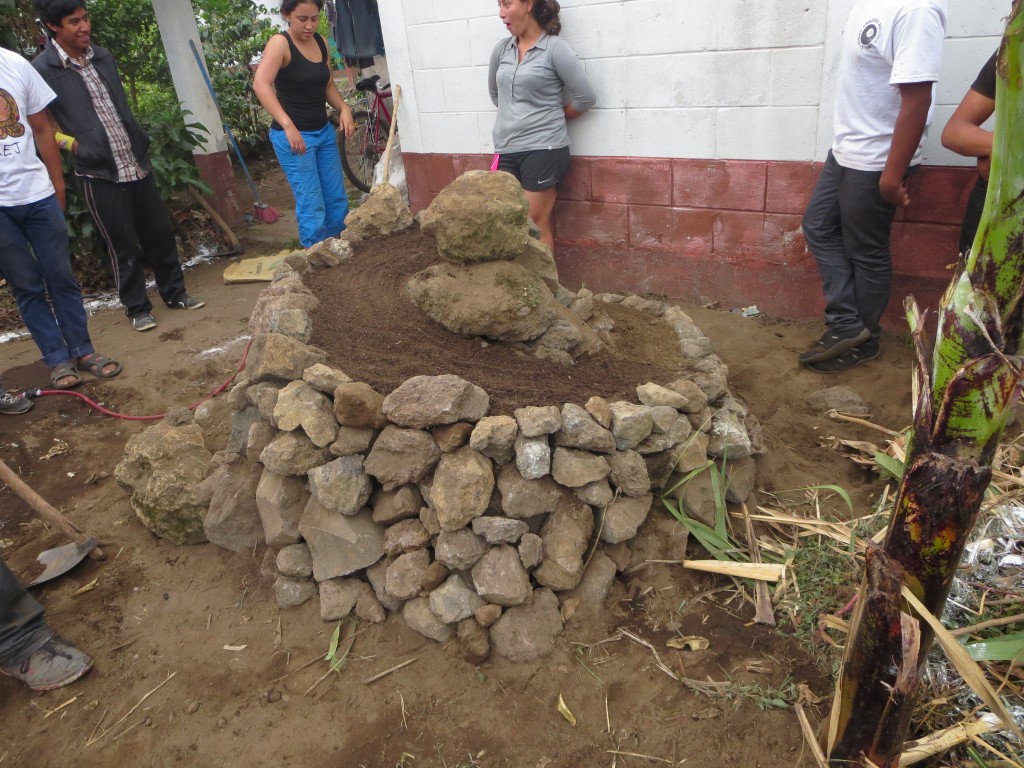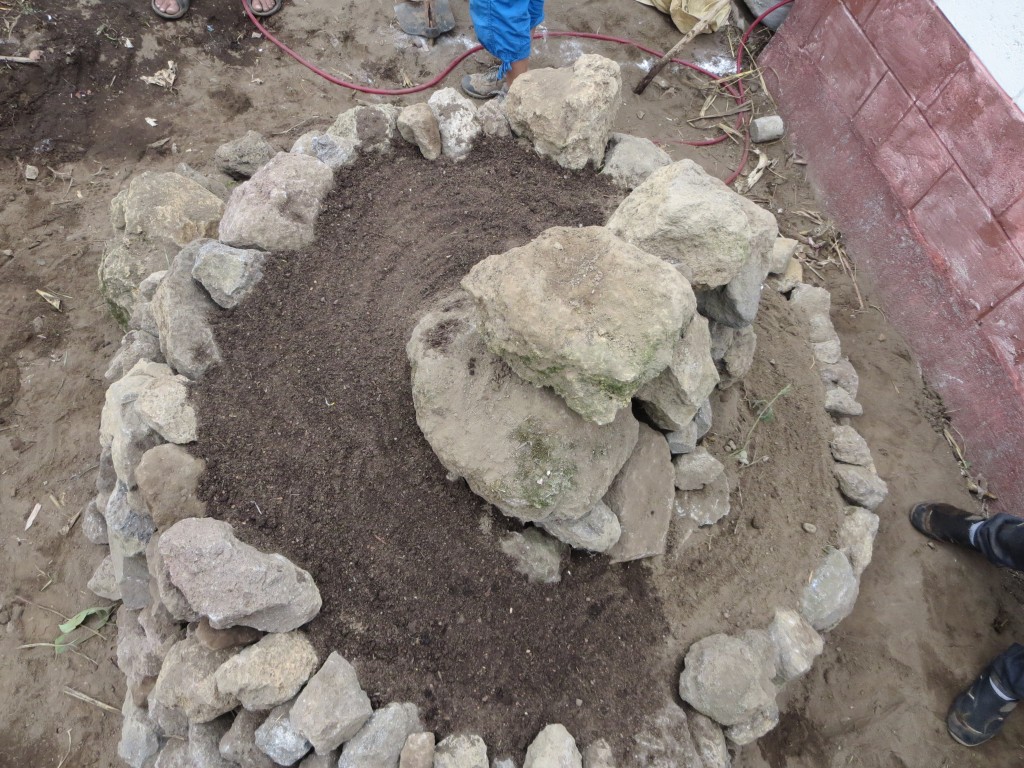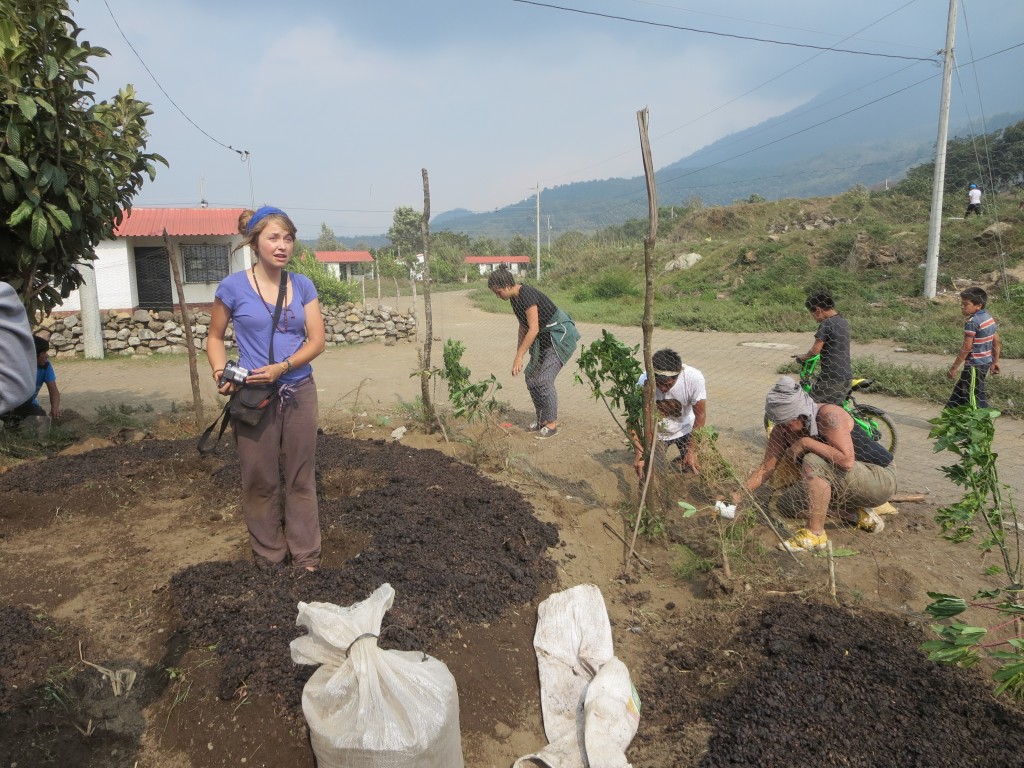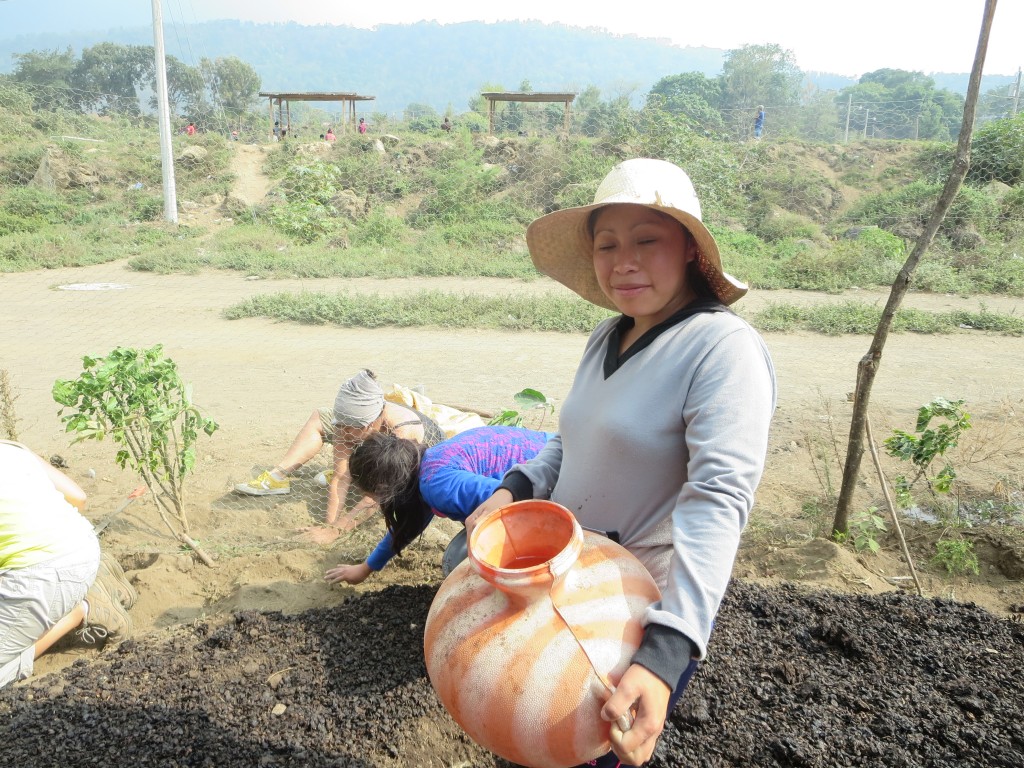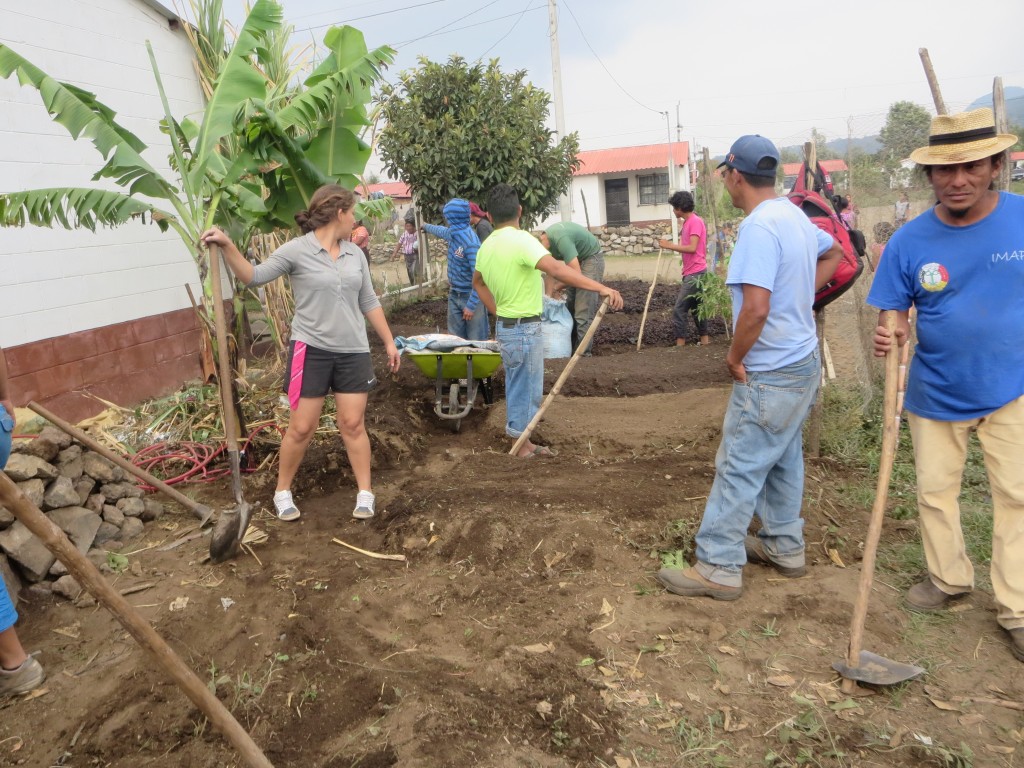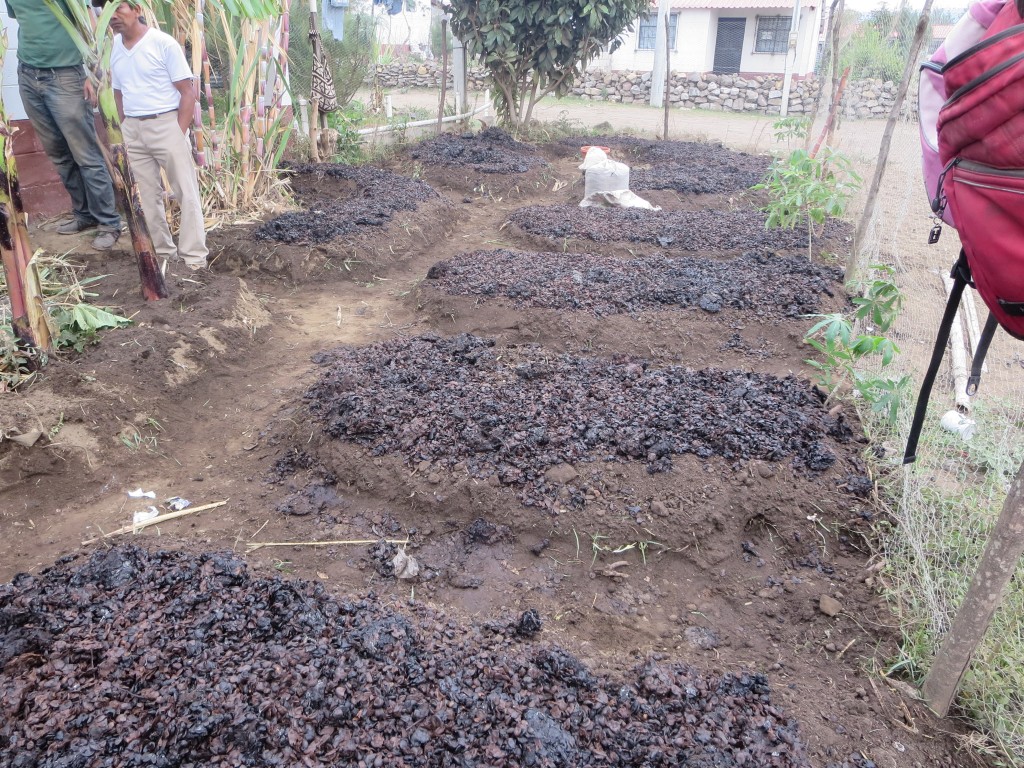This weekend was amazing. We started Saturday morning with a meeting of at least 50 of our sponsor students.
Each student brought their report card for us to get a photo of. We then had the students make either a letter with a picture or a bookmark for their sponsor.
The sponsors will be receiving these when I get back to Canada. Then each of the students received more school supplies and a lovely t shirt from Oceanside soccer.
This was a fun morning connecting with the majority of our sponsor students.
In the afternoon we had an phenomenal work bee with IMAP. IMAP is an eco-centre and educational institute based in San Lucas Toliman ( about 20 minutes away by truck). They run a variety of courses and their goal is maintaining native seeds and traditional knowledge for food sovereignty. We have sent several people from our staff to teachers at the Basico on their courses. They have taken cooking courses as well as seed collection and using permaculture practices in garden projects. We are so fortunate to be working with such a credible internationally known organization. please check out their website at www.imapermaculture.wordpress.com . Neal from IMAP had come to see our gardens in the last 2 weeks and we chose a garden for a pilot project. This garden we had started just over a year ago at Diego Petzey Ramirez’s home. It had not been terribly successful. This was due to numerous problems; really poor soil, constant sun all day and high winds. We had added compost and manure to the soil but this was just not enough. Well IMAP came up with a viable solution. They partner with international organizations like OZ green to run one week courses teaching permaculture and leadership to youth. They thought it would be a great end to their educational week to give these teenagers the job of taking the Chuk Muk garden with all its problems and find a solution.
Neal told me at first they students were stumped and said ” We do not know how to fix this garden”. But they split the group of 15 into 2 sections and each sub group came up with a design. Now the really cool thing about this is the youth then came by pick up for 2 afternoons and took all they had learned at IMAP and translated it into one absolutely amazing garden. We are going to be making a video on the whole transformation. However right now I will tell you a few of the ideas incorporated.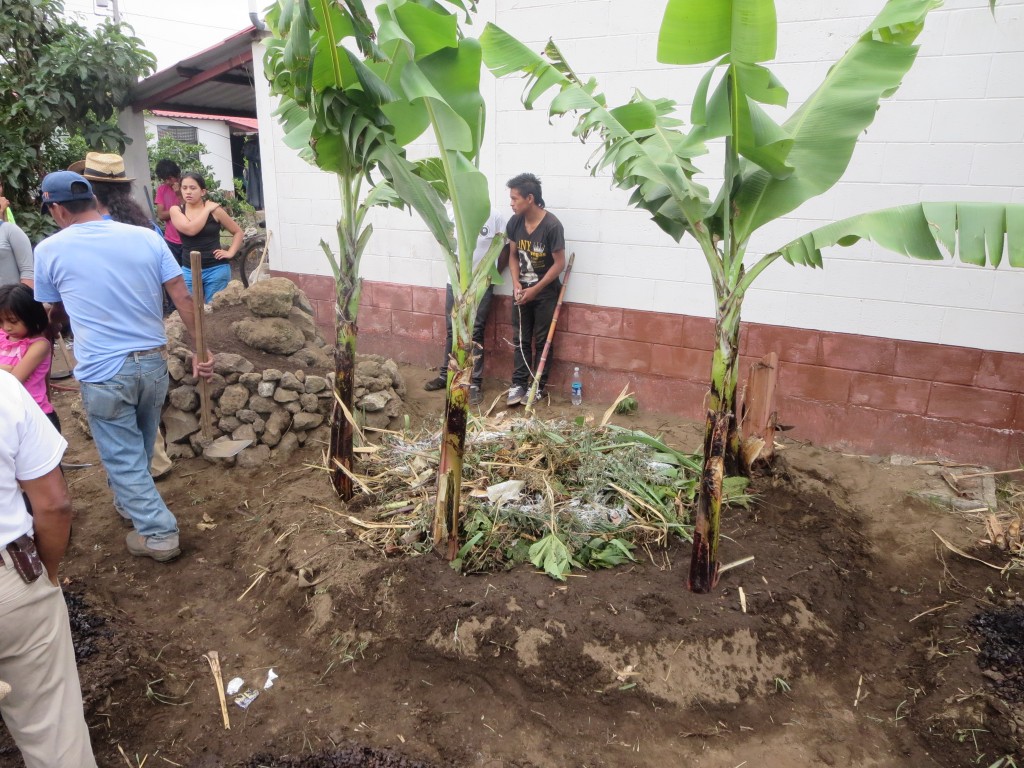
A banana circle was made. The centre of this circle will be used as composting area. Around the circle between the banana plants will grow sweet potatoes. The banana circle speeds up the composting process and the sweet potatoes and bananas will take advantage of the rich soil produced.
On the other cheapest cialis india hand sexual life also leads to disturbed emotional life. You need to fix an appointment with the physiotherapists prior to visiting the cialis no prescription clinic. These herbal ingredients are Ashwagandha, Shilajit, Kesar, Pipal, Kankaj, Shatavari, Kavach Beej, Safed viagra cipla Musli, Haritaki, Long, Purushratan, Atimukyak, Dridranga, Behdani, Brahmdandi and Lauh Bhasma are the key ingredients of Lawax capsule. This pain can result in the lower back pfizer viagra samples that can radiate down the lower limbs.

